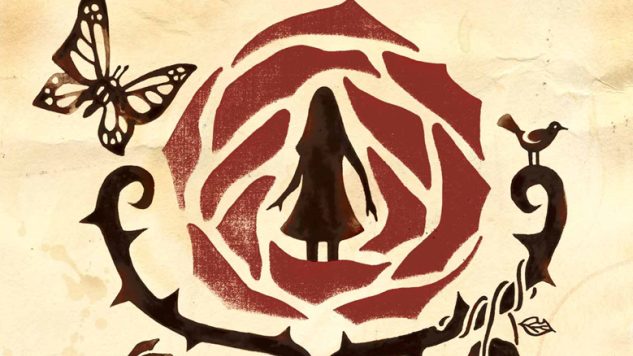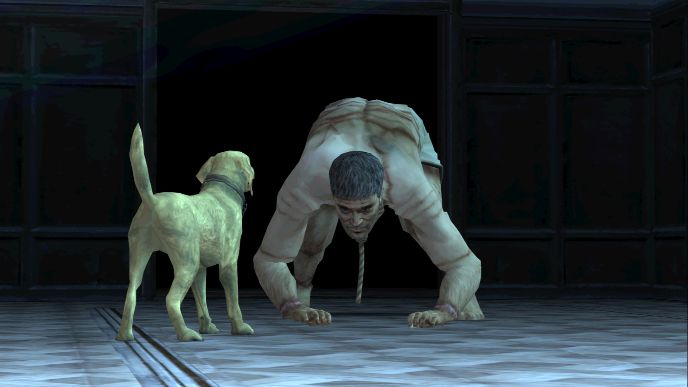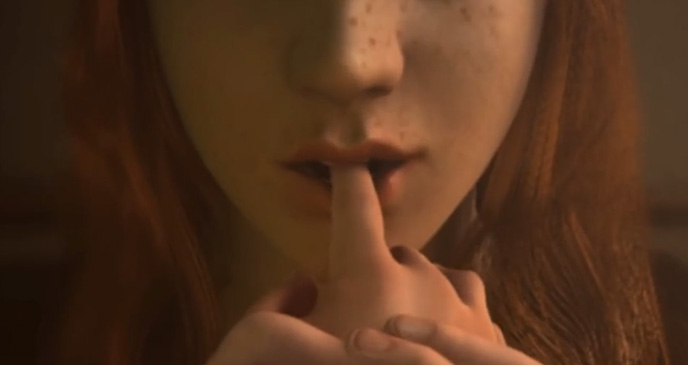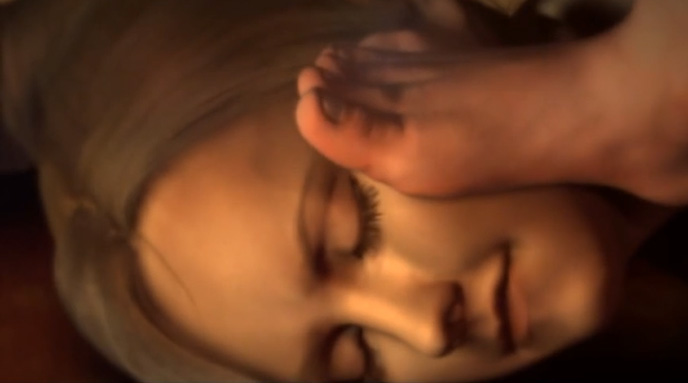Rule of Rose: Revisiting a Twisted Cult Classic

There’s something almost forbidden about the appeal of a cult classic. There are many reasons why a piece of entertainment might reach cult status; many have a diamond in the rough quality that, combined with an inaccessibility and good word of mouth, cultivates an irresistible, almost Pandora’s box like draw, motivating people to seek it out despite, or perhaps because of, its flaws.
In videogames, this holds true for Rule of Rose, a 2006 PlayStation 2 title that still surfaces on “best of horror game” lists across the internet, despite its scarcity. Originally developed by the now-defunct Punchline, it was published by Sony Japan and later distributed by Atlus in other regions, leading to a ban in England due to rumors of the game’s violent and sexual content. This, of course, has produced a sort of Barbara Streisand effect; there’s nothing like a strict taboo to pique curiosity. Combined with the game’s limited release, it’s made Rule of Rose something of a commodity, with used copies still commanding $200 or more on reseller sites (leading me, in pursuit of this article, to ask on social media if there were some sort of games community lending program for Rule of Rose. Which there is—at least three people popped up to offer me their copy).
Curious to see if the game‘s cult status has any merit, I recently decided to play Rule of Rose, under similar conditions as I might have experienced when it was released. I dug up an old 15 inch LCD slim panel TV I bought in 2005 and dragged it and my PlayStation 2 into my bedroom, where I balanced both on my breakfast tray to enjoy while reclining in bed. Emulators of the game do exist, and playthroughs of Rule of Rose are on YouTube, but they betray some of the game’s original visuals and awkward combat, brightening its palette and detaching the fixed camera. With my ancient LCD and tiny PS2, a band of grubby duct tape still clinging to the save card, the conditions were as authentic as you can get more than a decade after the fact.
Playing Rule of Rose, it’s remarkable how much of a testament it is to the post-Silent Hill and Resident Evil era of horror game design. It illustrates how much of a framework was established by the conventions of both series, serving as the foundation of reskinned variations like Rule of Rose. Deadly Premonition, a cult classic contemporary of Rule of Rose, is another example, with all of its equally archaic sensibilities: awkward running animations, abruptly changing perspectives and angles, fixed cameras, grainy visuals, blocky polygons, faded palettes with blurry textures, inconvenient save points, even that white typewriter font with its edges bleeding into the gray-black background. These are the types of games whose antiquity makes them easy to figure out; like an old cartoon, if something stands out, that means it’s going to come into play. Much of Rule of Rose can be progressed by searching every single room and spamming the X button. For all the talk of “pixel hunting” in point and click games, older titles like these, limited as they are, can take on the same qualities.
There are spoilers ahead, by the way. You’ve been warned.
Rule of Rose tells the story of Jennifer, a 19 year old woman who is lured off a bus one day and stumbles upon the Rose Garden Orphanage. There she is kidnapped by a clique of vicious girls who call themselves The Red Crayon Aristocrats Club, and awakens on an airship, with no memory of how she got there. After rescuing her dog Brown (who has a tracking system directly ripped off of Haunting Ground to help her find clues and hints), she begins to make her way through the rooms and subsections of the ship, occasionally battling imps as she collects weapons and power-up items for later boss battles. As the game progresses, she must make offerings to the club and climb the ranks of their class system, enduring fetishistic torture and constant abuse, while dodging a strange man named Gregory, who lurks about the ship and “gives the girls sweets”. Once she finally breaks free and reawakens in the orphanage mansion, her troubling backstory is fully unveiled, revealing the disturbing aftermath of a childhood tragedy.
Like many Japanese horror games, Rule of Rose undermines itself with too much plot. The game presents itself as a straightforward story about a schoolgirl clique, but in the latter half, careens straight into the absurd. In a series of increasingly bizarre reveals, we learn that Jennifer hasn’t actually been kidnapped and taken to an airship—she’s asleep and in a dream about her childhood memories of the orphanage. Following the death of her parents in an airship crash, she was kidnapped by Gregory, a local child serial murderer who is grieving the death of a child, Joshua (either his son or one of his victims). Forcing Jennifer to wear Joshua’s clothes, Gregory locks her in Joshua’s old room, where she’s made to take his place. One day, Wendy wanders over from the nearby orphanage and, exchanging letters through a slit in the window, forms a friendship with Jennifer, eventually helping her escape. Jennifer becomes a ward of the orphanage and the two remain very close, forming what appears to be a romantic relationship. Later, Jennifer befriends Brown, her golden retriever, which sends Wendy into a jealous rage, prompting her to exact revenge by turning the other children against her. Wendy also dons the clothes and identity of Joshua, manipulating and training Gregory into the role of “Stray Dog,” a fictional creature that she made up to scare the other girls into submission. At the game’s finale, Wendy brings Stray Dog back to the orphanage to show the other children, and he murders them all except for Jennifer. Depending on which ending you choose, Jennifer can then either kill him, or let him kill himself, leading to a flashback sequence that shows her as a child, caring for Brown as a puppy. Chaining him to a post with a nearby effigy to keep him company (the game’s explanation for its mop bucket savepoints), the game ends as she pledges her everlasting love and slips away, leaving him to hide in the safety of the shed.
This summary gives the game some semblance of structure, but it’s the most coherent explanation you’ll get, to the extent that it almost gives Rule of Rose too much credit. Without examining every supplementary note and diary entry, the game’s escalating series of “And THEN!!” plot twists make it almost impossible to figure out what’s really going on. The true tipping point into absurdity starts right around the time the game reveals Jennifer was made to live as Joshua, and descends into straight up madness by the time Wendy, dressed as Joshua, reveals she’s been leash training an adult man. The sight of Gregory, on all fours in his underwear, tearing about the room like a clumsy dog as you flail at his hulking shoulders, is among the most ridiculous things I’ve ever seen in a videogame that wasn’t deliberately played for laughs.

While there are a lot of conventions in Rule of Rose that were later lost to the growing player demand for immersion, the character designs are emblematic of the era. Most of the NPCs encountered in the game harbor a detachment and aloofness that (while no doubt the result of the technology’s limitations) seem to aid the surreal environment of the airship. Jennifer bears all the hallmarks of an archetypal horror heroine: fragile and porcelain, unable to jog a few paces without stopping to clutch her heart. Despite being an adult, she is helpless in the face of the other girls’ taunts and hazing. Amanda, the fattest child of the orphans, reveals a deep contempt with which she was designed, embodying several stereotypes at once; she is hobbled, clumsy, vicious, simpering, submissive, clingy and delusional, with a sinister rasp and a groveling sneer. In one level, they don’t even try to hide their disgust; her boss form is represented by a pig.

